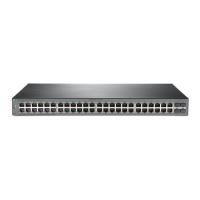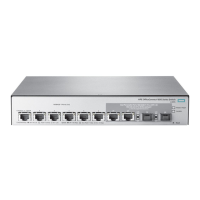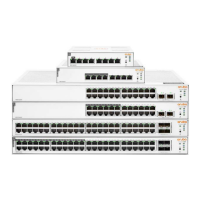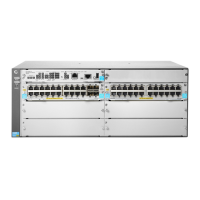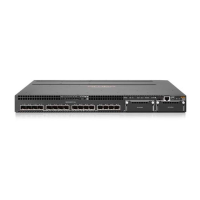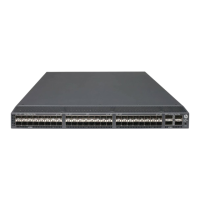95
Figure 14 Network diagram
Configuration procedure
IMPORTANT:
• When you connect two neighboring stack members, you must connect the physical interfaces o
IRF-port 1 on one member to the physical interfaces of IRF-port 2 on the other.
• On the webpages, stack and stacking are referred to as IRF, and stack port is referred to as IRF
port.
1. Configure Switch A:
a. From the navigation tree, select Device > Virtualization > IRF.
b. Click the basic settings link, and then access the details page for member device 1 to
perform the following tasks:
− Assign a new member ID of 2 to the device.
− Set the priority to 10.
For Switch A to become the master, assign it a higher priority than Switch B.
c. Click the IRF port bindings link, and then access the details page for IRF-port 1 to assign
XGE 1/0/49 and XGE 1/0/50 to IRF-port 1.
d. Click the advanced link to perform the following tasks:
− Set the domain ID to 10.
− If the software version is Release 3111P02, save the running configuration, and then
reboot the device.
If the software version is Release 5103P03, activate IRF port configuration, save the
running the configuration, and then reboot the device.
The new member ID takes effect after the reboot.
2. Configure Switch B:
a. From the navigation tree, select Device > Virtualization > IRF.
b. Click the basic settings link, and then access the details page for member device 1 to
perform the following tasks:
− Assign a new member ID of 3 to the device.
The IDs of member devices must be unique.
− Use the default priority for the device.
XGE1/0/50
(IRF-port1)
XGE1/0/50
(IRF-port2)
Switch A Switch B
1950 Stack
IP network
XGE1/0/49 XGE1/0/49
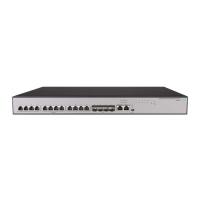
